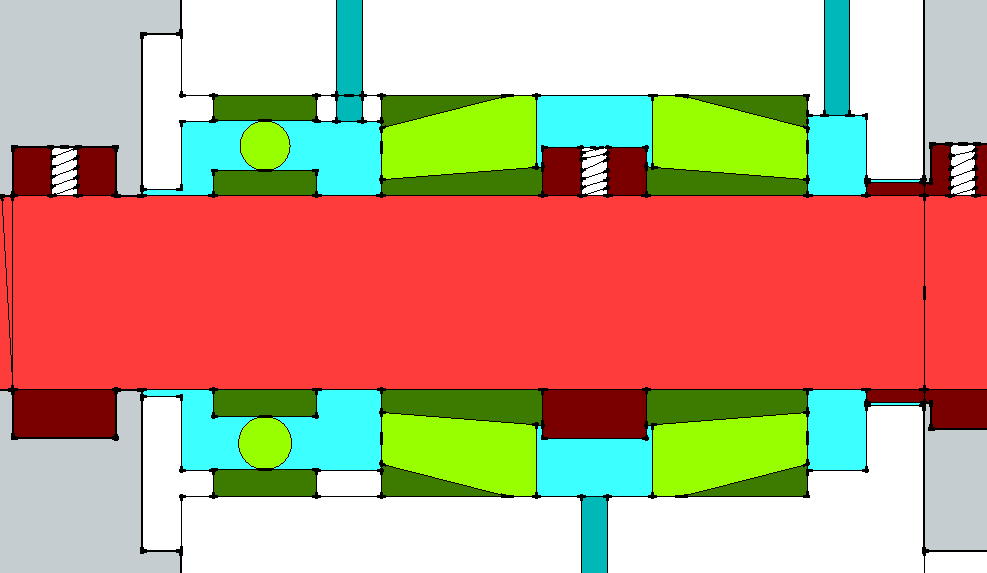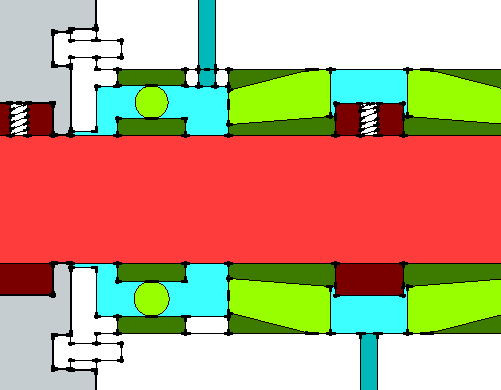Hi Rainbows
My lathe a German VDF RO 80 uses an NN type double row cylindrical roller bearing with a tapered inner ring for adjustment next to the chuck. They are very expensive, the cost of a small lathe for one bearing. The system works very well Recently I was able to find a new one in an auction job lot (It was a bearing supplier) I am still too scared to strip the head down to fit it! The lathe is from the 70's.
Plain tapered roller bearings are a fraction of the cost of an NN type. many high quality lathes use them.
One thing to consider when selecting bearings is the maximum speed for a given size, Tapered roller bearings size for size have lower maximum speed ratings than angular contact ball bearing sets, the reason they are used in CNC machining centre spindles. on the other hand tapered rollers will carry higher loads. Lubrication plays an important role keeping bearings cool. grease is fine at lower speeds however churning it causes heat build up, oil lubrication allows for higher speeds, after that oil mist lubrication ceramic balls and other exotic systems are used.
Given a choice I would go for oil lubrication.
The one thing I miss with my lathe is higher speeds, I would really like a small lathe that could do at least 3000 rpm ideal for turning small parts. Oh and I need more room to house it.
Smaller diameter bearings in most cases have higher speed ratings and cost less.
The major bearing manufacturers all have excellent downloadable application manuals; worth reading.
Regards
John
Edited By John McNamara on 06/05/2016 14:59:55
Hopper.












